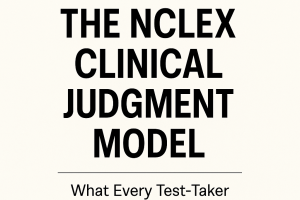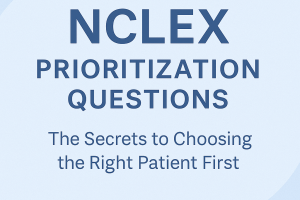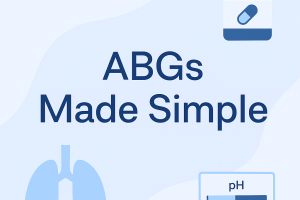PAIN MANAGEMENT: OPIOIDS AND NON-OPIOIDS

Managing pain effectively is a critical aspect of healthcare, particularly for patients dealing with surgery, injury, or chronic conditions. As healthcare providers, nurses play a crucial role in assessing pain and determining appropriate interventions. Pain relief can be achieved through two main categories of medications: opioids and non-opioids. Both have different mechanisms of action, benefits, and risks, and understanding when and how to use these medications is key to enhancing patient outcomes.
What are opioids?
Opioids are a class of medications used to treat moderate to severe pain. They act on opioid receptors in the brain and spinal cord, altering the perception of pain. Opioids are commonly used for acute pain (such as post-surgical pain) or chronic conditions like cancer-related pain or severe arthritis.
Common opioids include:
– Morphine
– Oxycodone
– Hydrocodone
– Fentanyl
Opioids are potent and effective but come with risks, particularly related to dependency, tolerance, and overdose. One of the major challenges in opioid use is their potential for addiction, leading to widespread concern about opioid abuse and the ongoing opioid crisis. Because of this, healthcare providers are encouraged to prescribe opioids cautiously and explore other pain management strategies.
How opioids work:
Opioids work by binding to specific receptors in the brain and spinal cord, blocking pain signals and producing a feeling of euphoria. While this can provide significant relief, it also contributes to the risk of dependency, especially with long-term use. Side effects can include drowsiness, constipation, nausea, and respiratory depression in severe cases.
What are non-opioid pain medications?
Non-opioids are a broad category of pain relief medications used to treat mild to moderate pain. Unlike opioids, they do not carry a significant risk of dependency and are commonly prescribed for conditions such as headaches, muscle pain, and minor injuries. Non-opioids can also be used in conjunction with opioids to enhance pain relief while minimizing the dose of opioids needed.
Common non-opioids include:
– Acetaminophen (Tylenol)
– Nonsteroidal anti-inflammatory drugs (NSAIDs) like ibuprofen and naproxen
– Topical analgesics (creams and patches that contain pain-relieving substances)
– Antidepressants and anticonvulsants (often used for nerve pain)
How non-opioids work:
Each type of non-opioid works differently. For instance, acetaminophen reduces pain by inhibiting chemical messengers in the brain, while NSAIDs reduce inflammation and pain by blocking enzymes that contribute to swelling and discomfort. Non-opioids are generally safer for long-term use, although NSAIDs, in particular, can cause gastrointestinal issues or increase the risk of heart problems if used over time.
When to choose opioids vs. non-opioids
The choice between opioids and non-opioids depends on the severity and type of pain a patient is experiencing. For acute, severe pain (such as that experienced after surgery), opioids may be necessary, but they should be used for the shortest duration possible. In cases of chronic or mild pain, non-opioids are often the first line of treatment due to their safety profile.
Opioids should be reserved for situations where pain is not manageable with other medications, and they should always be prescribed with caution to reduce the risks of side effects and dependency. In addition, non-opioid pain relief strategies such as physical therapy, massage, and heat or cold application can complement medication to provide a more holistic approach to pain management.
Considerations for pain management in nursing
As nurses, it’s essential to assess pain regularly and thoroughly, using scales like the Numerical Rating Scale (0 to 10) or the Wong-Baker Faces Pain Rating Scale. Accurate assessment allows for better pain management and helps prevent under- or over-treatment. It’s also critical to monitor patients for any side effects, particularly with opioids, and to educate them about the risks and benefits of their medications.
Some key factors to consider:
– Patient history: A history of substance abuse may warrant caution with opioid prescriptions.
– Pain type: Acute, severe pain might require opioids, while chronic or mild pain is better managed with non-opioids.
– Patient education: Educating patients about the proper use of pain medications, potential side effects, and when to seek help is vital for safe and effective pain management.
NCLEX-style questions:
1. A nurse is caring for a patient who is experiencing post-operative pain following abdominal surgery. The patient is prescribed both morphine and ibuprofen. What should the nurse prioritize in managing this patient’s pain?
A. Administering ibuprofen alone since it has fewer side effects
B. Using both medications as prescribed to provide effective multimodal pain relief
C. Administering morphine only, as opioids are stronger and more effective
D. Avoiding ibuprofen due to the potential for gastrointestinal bleeding
Answer: B. Using both medications as prescribed to provide effective multimodal pain relief.
2. A patient with a history of opioid addiction is admitted for severe pain following a traumatic injury. What should the nurse consider when developing a pain management plan?
A. Avoiding all opioids due to the risk of relapse
B. Using only acetaminophen to manage the pain
C. Collaborating with the healthcare team to explore alternative non-opioid options while carefully managing opioid use
D. Referring the patient to addiction counseling instead of treating their pain
Answer: C. Collaborating with the healthcare team to explore alternative non-opioid options while carefully managing opioid use.
3. A nurse is teaching a patient about the side effects of long-term NSAID use. Which of the following risks should the nurse include in the teaching?
A. Increased risk of dependency
B. Respiratory depression
C. Gastrointestinal bleeding and kidney damage
D. Euphoria and sedation
Answer: C. Gastrointestinal bleeding and kidney damage.
In conclusion, effective pain management requires a balanced approach, with a focus on the patient’s individual needs and the careful use of medications. Opioids are powerful tools for managing severe pain but carry significant risks, whereas non-opioids offer safer options for milder conditions. By combining medication with non-pharmacological approaches, nurses can ensure that patients receive safe, effective, and holistic pain relief.






